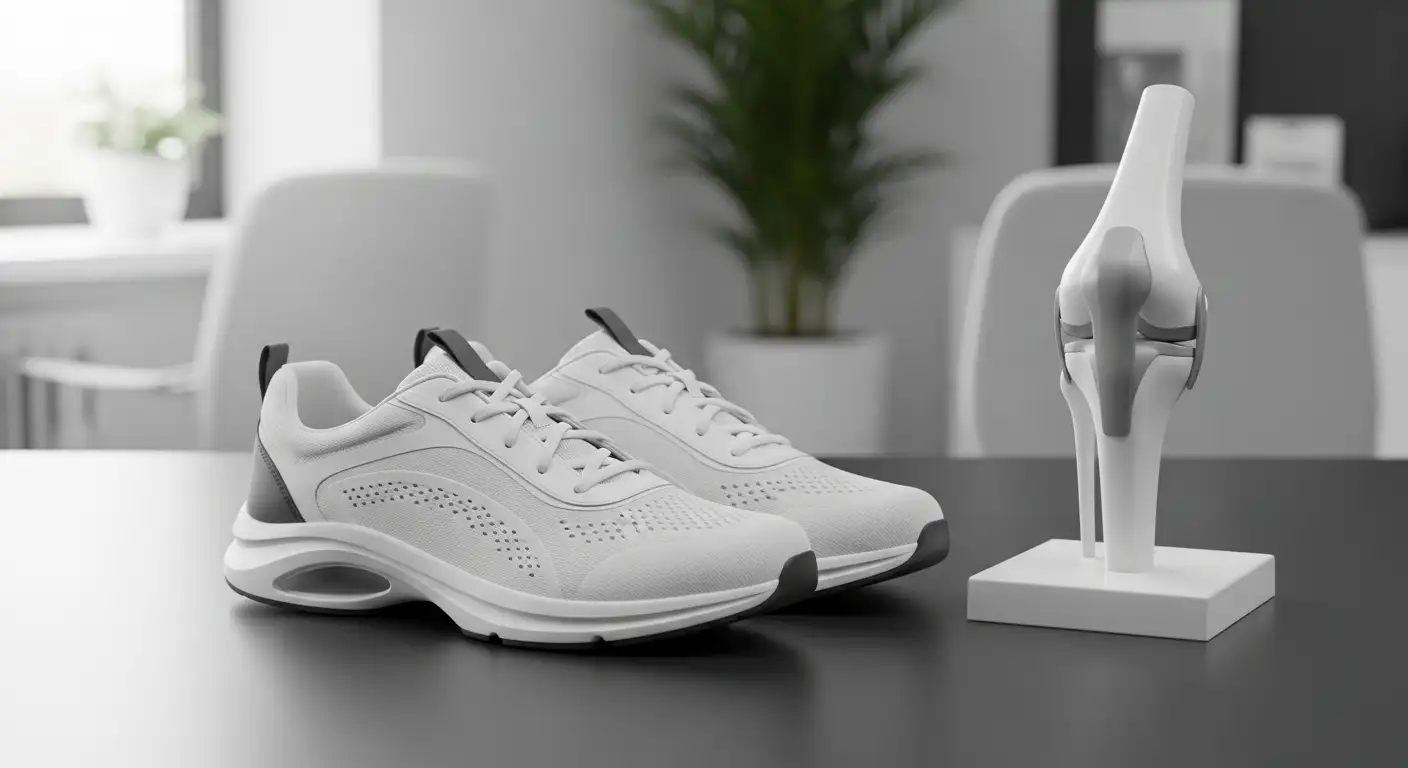Understanding Knee Pain
In order to address knee pain effectively, it's essential to understand its common causes and associated symptoms. This knowledge will help guide treatment options and preventative measures, particularly for individuals experiencing knee pain when straightening the leg.
Common Causes of Knee Pain
Knee pain can arise from various causes and is often due to a muscular imbalance, where one muscle group may be stronger or more overworked than another. This imbalance can lead to pain, particularly noted in athletes like runners due to poor form.

Knee pain when straightening the leg can also result from conditions such as:
- Meniscus tears
- Knee arthritis
- Patellar tendonitis
- Patellofemoral pain syndrome
- Inflamed bursa
These conditions may result from injuries like torn ligaments (ACL, PCL), overuse injuries like iliotibial band syndrome, or medical conditions like gout and infections [2].
Symptoms Associated with Knee Pain
Knee pain can be accompanied by other symptoms such as stiffness, weakness, popping or crunching noises, locking of the knee, or inability to bear weight on the affected leg. The severity of knee pain varies from person to person, ranging from a slight twinge to pain that interferes with daily life [2].
Understanding these causes and symptoms is a crucial step in seeking effective treatment for knee pain, especially knee pain when straightening the leg. It is always recommended to seek guidance from a healthcare professional for proper diagnosis and treatment [3].
Diagnosing Knee Pain
Determining the cause of knee pain is vital for effective treatment. This involves a combination of physical examinations and specialized tests.
Physical Examination
The first step in diagnosing knee pain is a physical examination. The doctor will assess the knee's flexibility, stability, and strength. They may also examine the pain's exact location, check for swelling or deformity, and evaluate how well the patient can move their knee. The doctor may ask the patient to walk, bend, or perform other movements to help diagnose the problem. If the knee pain is associated with straightening the leg, specific movements and positions may be evaluated to understand the issue better Mayo Clinic.
Imaging and Laboratory Tests
If the cause of the knee pain is not clear after the physical examination, imaging and laboratory tests may be recommended. These tests provide a more detailed view of the knee joint and surrounding structures, helping to identify any abnormalities that may be causing the pain.
- X-rays: This test provides images of dense structures, like bone. It can help detect fractures, osteoarthritis, or other bone diseases that may be causing knee pain.
- MRI (Magnetic Resonance Imaging): This test uses radio waves and a strong magnetic field to produce detailed images of the knee. It's especially useful for visualizing soft tissue structures like ligaments, tendons, and cartilage.
- Aspiration: In some cases, the doctor may need to aspirate (draw out) fluid from the knee for testing. This procedure can help identify signs of infection or inflammation and can also relieve pressure from a swollen knee Mayo Clinic.
These diagnostic measures play a vital role in determining the best course of treatment for knee pain, allowing for targeted and effective intervention. It's important to see a healthcare provider if knee pain persists or worsens, despite self-care measures, to ensure the underlying cause of the pain is correctly identified and treated.
Treatment Options for Knee Pain
When faced with knee pain, especially when straightening the leg, there are a variety of treatment options available. These include medications and injections, physical therapy and rehabilitation, and surgical interventions.
Medications and Injections
Medications are often the first line of treatment for knee pain. Over-the-counter pain relievers, such as ibuprofen or acetaminophen, may be recommended. Sometimes, prescription medications may be needed for severe pain. In addition to oral medications, steroid injections can be administered directly into the knee joint to reduce inflammation and ease pain. It's important to discuss these options with a healthcare provider to determine the best course of action based on the individual's specific condition and overall health [4].
Physical Therapy and Rehabilitation
Physical therapy is a key component of knee pain treatment. It involves exercises designed to strengthen the muscles around the knee, improving its function and mobility. This, in turn, can alleviate pain when straightening the leg. Therapists may also use other techniques like heat or cold therapy, massage, and electrical nerve stimulation to help manage pain.
Among the recommended exercises are those that strengthen the quadriceps muscles, as these can provide crucial support for the knee joint.
Surgical Interventions
In cases where conservative treatments fail to provide relief, surgical interventions may be considered. Procedures such as arthrocentesis (removal of fluid from the knee joint), arthroscopy (a minimally invasive procedure to diagnose and treat knee problems), knee osteotomy (a surgery to change the alignment of the knee joint), and partial or total knee replacement may be recommended. The choice of procedure depends on the cause of the knee pain and its severity [4].
Before deciding on surgery, it's important to consider the potential risks and benefits, recovery time, and the impact on quality of life. Discussing these factors thoroughly with a healthcare provider can help individuals make an informed decision about the best course of treatment for their knee pain when straightening the leg.
Remember, the goal of any treatment plan is to reduce pain, improve function, and enhance quality of life. With the right approach, individuals can manage their knee pain effectively and get back to their regular activities with minimal discomfort.
Home Remedies for Knee Pain
While a comprehensive treatment plan for knee pain when straightening the leg should ideally be determined by a healthcare professional, there are some home remedies that can help alleviate the discomfort. These can be particularly useful for mild to moderate knee pain.
The RICE Protocol
The RICE protocol, which stands for Rest, Ice, Compression, and Elevation, is a tried-and-true method for managing various types of acute injuries, including those that might cause knee pain when straightening the leg [5].
- Rest: Avoid activities that put extra stress on your knee to give it a chance to heal.
- Ice: Apply an ice pack to your knee for 15-20 minutes every 2-3 hours to minimize swelling and reduce pain.
- Compression: Use an elastic bandage or a knee brace to provide support and control swelling.
- Elevation: Prop your leg up on a pillow or cushion whenever possible to help decrease swelling.
It's important to note that while the RICE protocol can help alleviate symptoms, it does not address the underlying cause of knee pain. For persistent or severe knee pain when straightening the leg, it's essential to seek professional medical advice.
Over-the-Counter Pain Relievers
Over-the-counter (OTC) pain relievers such as ibuprofen (Advil, Motrin) or naproxen (Aleve) can help reduce pain and inflammation associated with knee pain. Acetaminophen (Tylenol) can also be used to alleviate pain, though it doesn't have the same anti-inflammatory effects.
These medications should be used as directed and for short-term relief. Long-term use or high doses can lead to side effects and complications. Always consult with a healthcare provider if you have any questions or concerns about using OTC medications for knee pain.
There you have it, with a combination of rest, ice, compression, elevation, and OTC pain relievers, managing knee pain at home can be a relatively straightforward affair. However, it's important to remember that these are temporary solutions. If your knee pain persists, worsens, or is accompanied by other worrying symptoms, it's critical to seek medical assistance.
Preventative Measures for Knee Pain
Preventing knee pain can be as simple as incorporating certain exercises into your daily routine and making modifications to your lifestyle. These actions aim to improve the strength and flexibility of the muscles around the knee, improving stability, and reducing the risk of injuries that can lead to knee pain.
Strengthening Exercises
Strengthening exercises for the hips, knees, core, and gluteal muscles can help alleviate knee pain by addressing muscle imbalances that may contribute to discomfort [1]. Specifically, exercises for the quadriceps muscles can help with knee pain when straightening the leg.
Anil Nandkumar, PT, DPT, recommends specific exercises such as:
- Side Leg Raise
- Single-Leg Lift
- Hamstring Stretch
- Quadriceps Stretch
These exercises can help prevent and treat knee pain by increasing flexibility and mobility in the knee joint.
It's important to note that exercises should be performed under the guidance of a healthcare professional or a physical therapist to ensure correct form and to avoid unnecessary injury.
Activity Modification and Lifestyle Changes
Making changes to your lifestyle can also play a significant role in preventing knee pain. Prolonged inactivity such as sitting for extended periods can lead to a lack of flexibility, causing overreliance on certain muscles, overextension, and pain.
Adopting a more active lifestyle, taking regular breaks to move around during the day, and maintaining a healthy weight can all contribute to reducing the strain on your knees and preventing knee pain.
In summary, a combination of strengthening exercises and lifestyle modifications can play a crucial role in preventing knee pain. These preventative measures can help improve the overall health and function of your knees, making it easier to perform daily activities without discomfort.
When to Seek Medical Help
There are instances when knee pain requires prompt medical attention to prevent further complications. Recognizing serious symptoms and the importance of early intervention are critical steps in treating knee pain effectively.
Recognizing Serious Symptoms
While knee pain can often be treated at home, certain signs and symptoms indicate the need for urgent medical attention. These include knee pain caused by a major injury, signs of a fracture, a severely swollen or deformed knee joint, or an inability to bear weight on the affected leg.
Additionally, if knee pain is due to a forceful impact or injury, if the knee joint appears deformed or significantly swollen, or if there are associated symptoms like fever or signs of illness, it is recommended to make an appointment with a healthcare provider. Persistent knee pain that affects sleep or daily activities should also prompt a medical consultation.
Importance of Early Intervention
Early intervention can help prevent complications and improve the outcome of knee pain treatment. In cases where knee pain develops gradually over time, self-care measures at home may help alleviate the pain. Long-term knee pain is often attributed to arthritis, which can result from aging, previous trauma, heavy use, joint instability, or excessive weight on the knee. Exercise and weight loss are recommended for managing painful arthritis of the knee. Exercise helps strengthen the joint, while weight loss reduces pressure on the knee [6].
Self-care measures for knee pain without clear signs of trauma, gradual onset of pain, or mild injuries may involve home remedies to alleviate symptoms, such as rest, ice, compression, elevation, and over-the-counter pain relievers. However, if knee pain persists or worsens, a consultation with a healthcare provider is advised [6].
In conclusion, knowing when to seek medical help is crucial in the effective treatment of knee pain. By recognizing serious symptoms and understanding the importance of early intervention, individuals can take proactive steps towards pain reduction and improved knee health.
References
[1]: https://www.hss.edu/article_stretches-exercises-knee-pain.asp
[2]: https://www.mayoclinic.org/symptoms/knee-pain/basics/when-to-see-doctor/sym-20050688
[3]: https://phoenixrehabgroup.com/articles/knee-pain-treatment/knee-pain-when-straighten/
[4]: https://www.mayoclinic.org/diseases-conditions/knee-pain/diagnosis-treatment/drc-20350855
[5]: https://www.medicalnewstoday.com/articles/pain-in-back-of-knee-when-straightening-leg
[6]: https://www.mayoclinic.org/symptoms/knee-pain/basics/when-to-see-doctor/sym-20050688?p=1





